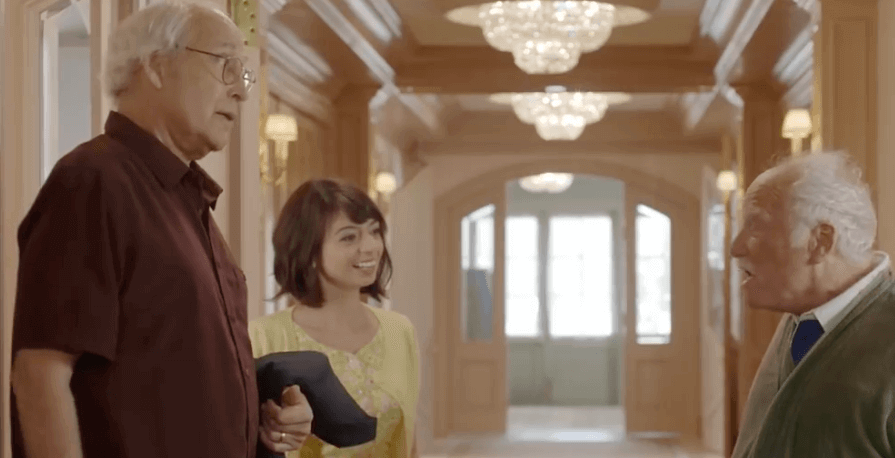From Netflix, we’ll be analyzing The Last Laugh today, a film that, like almost every interesting story, shows a reality away from more or less accepted clichés. This time it’s director Greg Pritikin who, through two big names in the cinema, Chevy Chase and Richard Dreyfuss, propose one?Road movie? In a funny tone. The film invites reflection on the prejudices and stereotypes associated with old age.
The idea is not new. The film industry started a few years ago with the good habit of offering us, from time to time, some of these comedies in which they put two, three or more actors older than they once were great film legends. Space Cowboys?
- It is impressive to see our favorite heroes.
- Actors or actresses reach old age.
- The ones that marked our childhood memories when they were so young.
- We were impressed by the proximity.
- It affects us because we saw them young.
- Handsome.
- Agile and we even fell in love with them.
Again, with The Last Laugh, cinema offers us a good topic of reflection, what to do or not do after a certain age?, you don’t need to be a great Hollywood actor to ask that question. will happen to all of us someday.
The truth is that there are many ideas established in reference to what is practical, appropriate, healthy or indicated when people reach the last stage of their lives, some people feel totally lost trying to find roles that fit their age and meaning. seem to have lost in their evolution.
Chevy Chase plays a retiree, Al Hart, who represents comic actors throughout his professional career and is passionate about the job. At the insistence of his closest relatives, concerned about his old age, he decided to move into a retirement home.
There he meets a person who was his first client many years ago: Buddy Green (masterful, Richard Dreyfuss), who at the time was a young comedy promoter who gave up a brilliant potential career on stage to pursue a more serious profession and start a family.
Time spent in the nursing home varies between boring second-rate programs, card games, old stories, and resignation. Hart can’t get used to it. Eventually, he convinced Buddy to resume his acting career, which he abandoned in his youth.
They’re on their way to New York together, they don’t tell their families, and their roommates think they’ve gone crazy. Al, as his representative, organizes Buddy’s performances in countless villages and small villages that cross the big block a goal: an important comedy show on television.
Several researches show that stereotypes associated with aging are gradually internalized and that individuals end up projecting these ideas onto themselves. Levy, Slade, Kunkle and Klas (2002) described this process. As children, we learn age stereotypes and generate expectations about our own aging. process, without questioning its validity.
Many times, when we reach the age of categorization in a group, stereotypes are already incorporated into our patterns and subconsciously we begin to apply them to others and ourselves. In this way, we change our perceptions of aging and adjust them to the corresponding stereotype. Unconsciously, we introduce behavioral changes that have physical and psychological consequences.
We generate new behaviors and exclude others that become discriminatory (which is “normal” to do) and prescriptive (what should be done). And so we continue to shape the stereotype. The truth is that people who do not conform to stereotypes of their age are unknown to us and in many cases cause rejection. Would this be the case for people over the age of 65 who have regular sex, a diet we partner with?Normal, in other age groups.
A study by Cuddy, Norton and Fiske (2005) found that less competitive characteristics were attributed to the elderly and more cordial, i. e. the stereotype of old age includes fewer skills and more sympathy, replicating the results obtained in the United States in 6 other countries of different cultures.
They found that people with more negative perceptions of their own aging process had shorter lives than those with more positive perceptions of this stage of their lives, namely an average of 7 and a half years less life, which occurred in the same way in both sexes and in different ethnic groups, without finding differences due to socioeconomic status or level of education.
Bargh, Chen and Burrows conducted another study (1996) with surprising results based on stereotypes for different age groups, tried to activate stereotypes of old-age plans in a group of young people, they did so through confusing words, phrases and photographs. It was observed that young people who had activated the categories of older adults began to walk much more slowly.
The last laugh masterfully shapes the need for some people to feel alive until the last moment. People’s identity is built throughout life. It is extremely cruel to reach the last stage of life by giving up what we have always been, losing our raison d’etion. Ether and self-esteem. Aging is a privilege, as long as you don’t stop feeling alive.
The Last Laugh offers us another privilege: to see these two magnificent actors on stage, perhaps for the last time.

